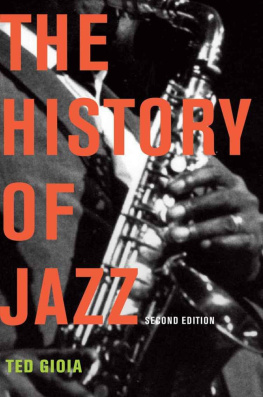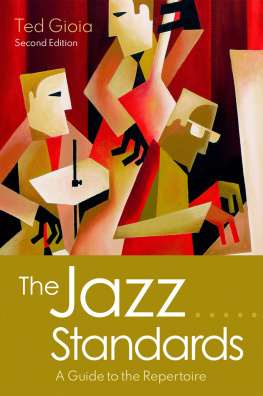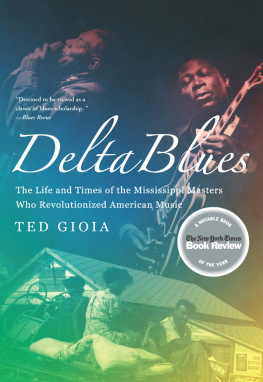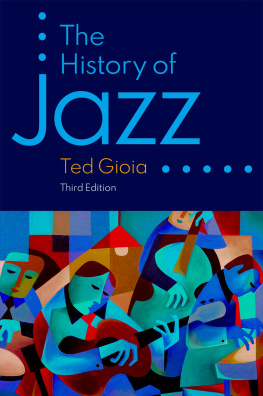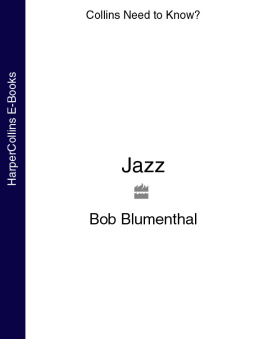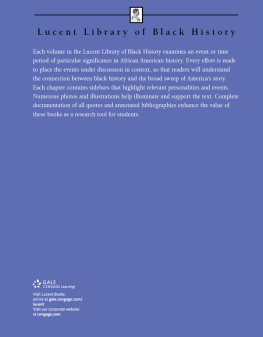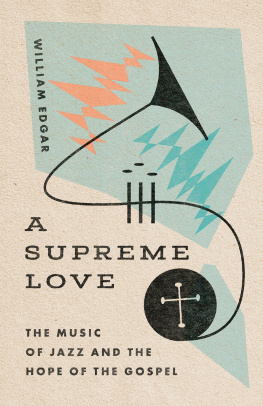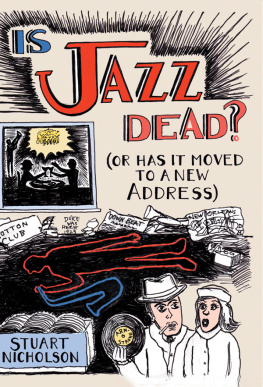The History of Jazz
THE HISTORY OF JAZZ
SECOND EDITION
Ted Gioia

OXFORD
UNIVERSITY PRESS
Oxford University Press, Inc., publishes works that further Oxford Universitys objective of excellence in research, scholarship, and education.
Oxford New York Auckland Cape Town Dar es Salaam Hong Kong Karachi Kuala Lumpur Madrid Melbourne Mexico City Nairobi New Delhi Shanghai Taipei Toronto
With offices in Argentina Austria Brazil Chile Czech Republic France Greece Guatemala Hungary Italy Japan Poland Portugal Singapore South Korea Switzerland Thailand Turkey Ukraine Vietnam
Copyright 2011 by Ted Gioia
Published by Oxford University Press, Inc. 198 Madison Avenue, New York, New York 10016
www.oup.com
Oxford is a registered trademark of Oxford University Press.
All rights reserved. No part of this publication may be reproduced, stored in a retrieval system, or transmitted, in any form or by any means, electronic, mechanical, photocopying, recording, or otherwise, without the prior permission of Oxford University Press.
Library of Congress Cataloging-in-Publication Data
Gioia, Ted.
The history of jazz / Ted Gioia. 2nd ed.
p. cm.
Includes bibliographical references and index.
ISBN 978-0-19-539970-7
1. JazzHistory and criticism. I. Title.
ML3506.G54 2011
781.6509dc22 2010023182
All photographs in this book are courtesy of The Frank Driggs Collection.
9 8 7 6 5 4 3 2 1
Printed in the United States of America
on acid-free paper
for my wife, Tara
Contents
The History of Jazz

1 The Prehistory of Jazz
THE AFRICANIZATION OF AMERICAN MUSIC
An elderly black man sits astride a large cylindrical drum. Using his fingers and the edge of his hand, he jabs repeatedly at the drumheadwhich is around a foot in diameter and probably made from an animal skinevoking a throbbing pulsation with rapid, sharp strokes. A second drummer, holding his instrument between his knees, joins in, playing with the same staccato attack. A third black man, seated on the ground, plucks at a stringed instrument, the body of which is roughly fashioned from a calabash. Another calabash has been made into a drum, and a woman beats at it with two short sticks. One voice, then other voices join in. A dance of seeming contradictions accompanies this musical give-and-take, a moving hieroglyph that appears, on the one hand, informal and spontaneous yet, on closer inspection, ritualized and precise. It is a dance of massive proportions. A dense crowd of dark bodies forms into circular groupsperhaps five or six hundred individuals moving in time to the pulsations of the music, some swaying gently, others aggressively stomping their feet. A number of women in the group begin chanting.
The scene could be Africa. In fact, it is nineteenth-century New Orleans. Scattered firsthand accounts provide us with tantalizing details of the slave dances that took place in the open area then known as Congo Squaretoday Louis Armstrong Park stands on roughly the same groundand there are perhaps no more intriguing documents in the history of African American music. Benjamin Latrobe, the noted architect, witnessed one of these collective dances on February 21, 1819, and not only left us a vivid written account of the event but made several sketches of the instruments used. These drawings confirm that the musicians of Congo Square, circa 1819, were playing percussion and stringed instruments virtually identical to those characteristic of indigenous African music.
Later documents add to our knowledge of the public slave dances in New Orleans but still leave us with many open questionssome of which, in time, historical research may be able to elucidate, while others might never be answered. One thing, however, is clear. Although we are inclined these days to view the intersection of black and white musical currents as a theoretical, almost symbolic issue, these storied accounts of the Congo Square dances provide us with a real time and place, an actual transfer of totally African ritual to the native soil of the New World. Congo Square may have looked like it was nothing but a party, music historian Ned Sublette has written, but to play a hand drum in 1819 in the United States, where overt manifestations of Africanness had elsewhere been so thoroughly, deliberately erased, was a tremendous act of will, memory and resistance.
The dances in Congo Square were a nexus where opposites collided. The ingrained Western division between performer and audience was eradicateda distinction so fundamental to us, but of such little importance in traditional African cultures. The separation of song from dance, also pervasive among Western thinkers who deal with the arts, was equally nullified, replaced with a more intrinsically African congruence of sound and movement. These gatherings, a mixture of the ceremonial and social, further broke down barriers between secular and spiritual impulsesa firsthand account from 1808 even uses the word worship to describe them.
The dances themselves, marked by clusters of individuals moving in a circular patternthe largest less than ten feet in diameterharken back to one of the most pervasive ritual ceremonies of Africa. This rotating, counterclockwise movement has been noted by ethnographers under many guises in various parts of the continent. In the Americas, the dance became known as the ring shout, a ritual that, in the words of scholar Sterling Stuckey, served as the main context in which Africans recognized values common to them. The appearance of this African carryover in New Orleans is only one of many documented instances in the New World. This tradition persisted well into the twentieth century: John and Alan Lomax recorded a ring shout in Louisiana for the Library of Congress in 1934 and attended others in Texas, Georgia, and the Bahamas. As late as the 1950s, jazz scholar Marshall Stearns witnessed unmistakable examples of the ring shout in South Carolina.
The Congo Square dances were hardly so long-lived. Traditional accounts indicate that they continued, except for an interruption during the Civil War, until around 1885. Such a chronology implies that their disappearance almost coincided with the emergence of the first jazz bands in New Orleans. More recent research argues convincingly for an earlier cutoff date for the practice, probably before 1870, although the dances may have continued for some time in private settings.
Above all, this transplanted African ritual loomed large in the collective memory and oral history of the citys black community, even among those too young to have participated in it. These memories shaped, in turn, the jazz performers self-image, their sense of what it meant to be an African American musician. My grandfather, thats about the furthest I can remember back, wrote the renowned New Orleans reed player Sidney Bechet in his autobiography, Treat It Gentle. Sundays when the slaves would meet that was their free dayhe beat out rhythms on the drums at the squareCongo Square they called it. He was a musician. No one had to explain notes or feeling or rhythm to him. It was all there inside him, something he was always sure of.
Within eyesight of Congo Square, Buddy Boldenwho legend and scattered first-person accounts credit as the earliest jazz musicianperformed with his pioneering band at Globe Hall. The geographical proximity is misleading. The cultural gap between these two types of music is dauntingly wide. By the time Bolden and Bechet began playing jazz, the Americanization of African music had already begun, and with it came the Africanization of American musica synergistic process that we will study repeatedly and at close quarters in the pages that follow. Anthropologists call this process
Next page
